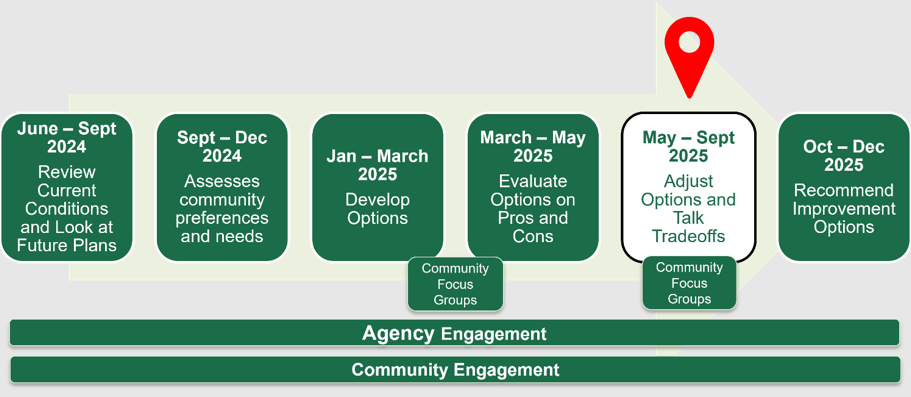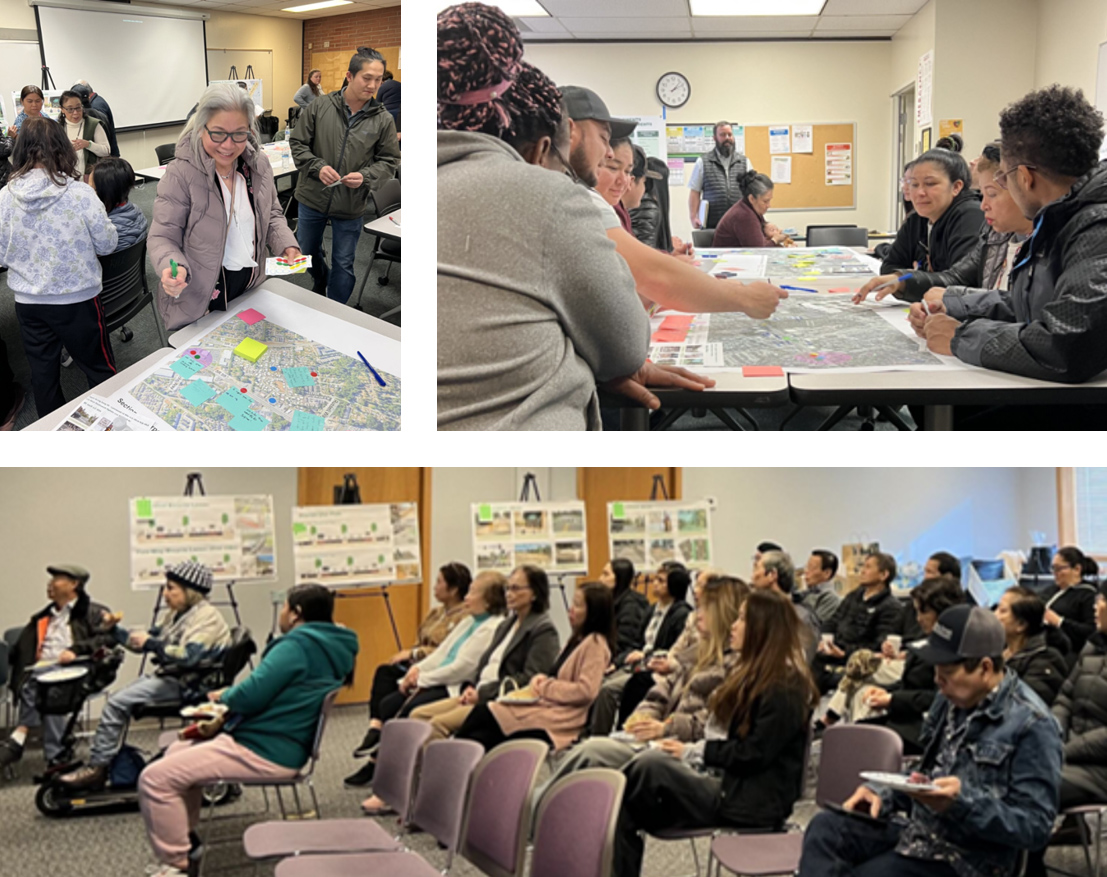When did the SR99 Pre-Design Study start?
The study began in 2022 but was paused in 2023 to comply with new statutory requirements and secure additional funding. With newly acquired funding, it resumed in 2024 and is expected to conclude in 2025.
How does this Study align with WSDOT’s commitments and principles?
The project reflects WSDOT’s commitment to Complete Streets, which ensures roadways are safe and accessible for all users—whether walking, biking, rolling, driving or using transit. Complete Streets are streets for everyone. A transportation system that accommodates all forms of transportation is more accessible, comfortable, economical, sustainable and efficient in the travel space provided.
We are also applying the principles of the Healthy Environment for All (HEAL) Act, which directs state agencies to address environmental health disparities that impact overburdened communities. WSDOT staff will assess how recommended improvements may impact these communities and vulnerable populations and will engage with those directly affected to identify strategies to reduce harm and increase benefit to all associated with the project. WSDOT is using the Washington Environmental Health Disparities (EHD) Map, census data and community input to help inform design.
What is the Study’s progress?

Community, tribal and agency engagement is happening throughout the study.
Schedule:
- June – September 2024
Analyze current and future street conditions along the SR 99 Study Corridor. - September – December 2024
Develop study draft transportation preferences and needs using community and agency feedback and current and existing streets conditions. - January – March 2025
Develop improvement options. - March – May 2025
Seek community and agency feedback on the draft improvement options. Refine improvement options based on feedback and data analysis. - May – September 2025
Seek community and agency feedback on improvement options, preferences and trade-offs. - October – December 2025
Evaluate refined improvement options using community and agency feedback and data analysis to develop a study recommendation and identify potential impacts.
How much does the study cost? Where are the funds coming from?
The study is funded with $800,000 from the Sandy Williams Connecting Communities Grant, $945,918 from a Puget Sound Regional Council Equity Grant and $147,613 in WSDOT funds.
What feedback has been provided to date and how has it been incorporated?
In 2022 an initial outreach surveyed 350 individuals to understand the SR 99 study corridor from their perspective. This feedback helped WSDOT develop the study purpose and needs.
Since late 2024, community engagement has included meeting with an equity working group, meeting with community members in focus groups, attending fairs and festivals, and outreach to community-based organizations. Meeting with different community members, community groups and working with local governments revealed preferences for local spot improvements as well as corridor-wide concepts. Our outreach helped us learn from the community a desire for:
- Safer sidewalks with lighting and wider walkways
- More and improved pedestrian crossings of SR 99, side streets and driveways, including for individuals with disabilities
- Transit lanes
- Better signage and pavement markings for walking and biking
- Better, and protected, bike lanes
- Better bus shelters, benches, and ADA-accessible stops
- Lower speeds.

